[Might Have Been tracks the failures of promising games, characters, and companies. This installment looks at Phantasy Star III, released for the Sega Genesis in 1991.]
Phantasy Star III is the one no one talks about much, and when they do the compliments are sparing. It’s Devil May Cry 2. It’s After War Gundam X. It’s Robocop 3. It’s Friday the 13th Part V. It’s Star Trek: Insurrection. It’s every Alien or Predator movie made since 1991.
It mostly deserves that. Phantasy Star III is a standard RPG of the early 1990s; short on story, long on battles, and lacking the inspired touches of the Phantasy Stars that came before and after. Though not an abysmal game, it doesn’t have much to show for itself.
But its potential? Good heavens, the potential it had.
Phantasy Star III may rate the lowest among the four proper 16-bit Phantasy Stars, but it’s the one that caught my attention the most. In 1991 it sounded amazing: a sprawling adventure across a world of castles and mutants and cyborgs, a world where we could control three different generations over the course of the game. Sega even told us that in the grimmest possible way.
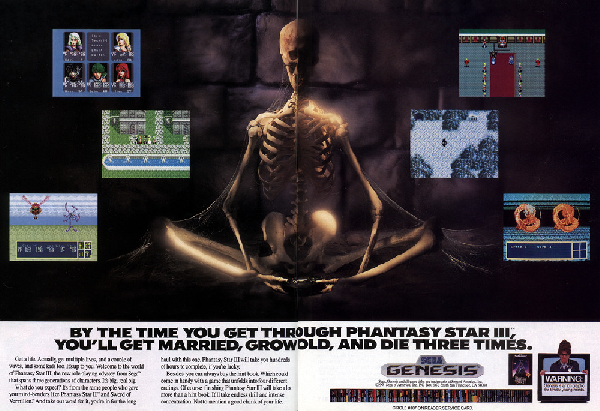
Not every kid might want to “age, marry, and die” thrice over the course of a video game, but for me it evoked a sense of grandeur as few games had. This was a saga so ambitious that it was effectively three games in one, and it carried the promise of an epic well before the Internet pounded all meaning out of the word.
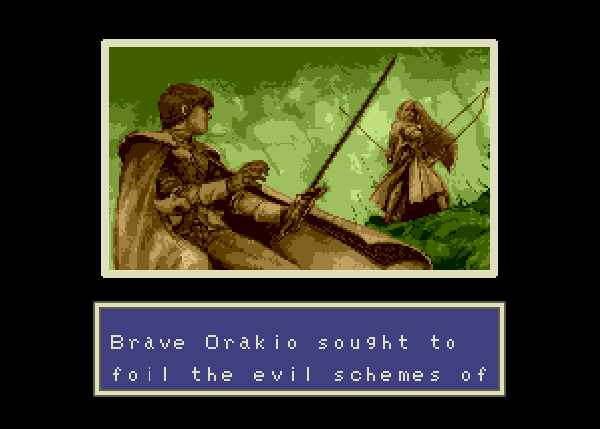
Phantasy Star III at least lives up to that promise with its introduction. There’s a unique aura in the piercing soundtrack and the arc of an otherworldly sunrise. The tale it initially spins offers fantasy templates with some lingering mysteries. The land remains divided by a millennia-old war between a witch named Laya and a knight named Orakio. Both of them disappeared in battle, and their descendants still squabble. Any astute fantasy reader will know what really happened between Laya and Orakio, but it seems it might be fun to find out more.
Other possibly interesting clichés appear: a woman washes ashore in the Orakian kingdom of Landen, lacking all memories of who she is. She knows her name is Maia, though, and after two months she knows that she wants to marry Prince Rhys of Landen. Rhys appears less enthusiastic due to his default character portrait, though he’s dutifully outraged when a dragon swoops in and steals Maia away on the day of their wedding.
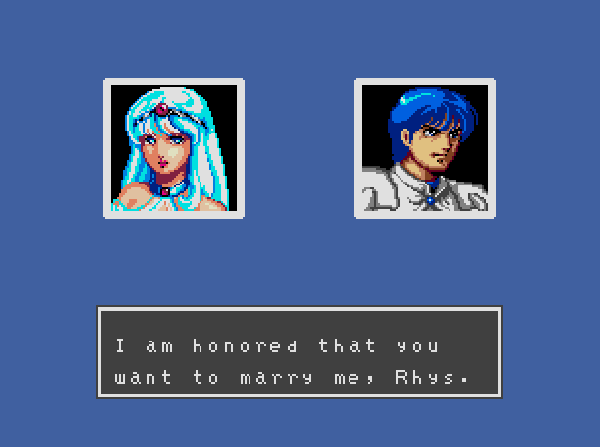
Phantasy Star III’s opening lacks the reckless melodrama of such classic wedding abductions as Krull or Vay, but it’s a decent hook for what could be an adventure through a world of ancient grudges and seemingly out of place technology. Sadly, that’s as interesting as Phantasy Star III really gets. The resulting story is thin on characterization, merely introducing semi-novel plot twists instead of exploring them. It’s a challenge to truly care when we learn that Laya and Orakio were allies…or even that this fantasy realm is inside a giant colony spaceship.
It’s hard to make a completely boring game with Phantasy Star III‘s ideas, and there are moments here and there. It’s intriguing when Rhys first finds a weirdly high-tech warren under the landscape of deserts and forests and medieval-grade towns, or when he meets his first ally in Mieu, a cyborg (well, an android, but the game calls them cyborgs) who has spent a thousand years apparently contemplating a small lake. Yet there’s no depth of wonder to it, nothing more than a cursory conversation. Little help comes from the game’s aesthetics; the remainder of the soundtrack never gets as striking as the opening chords, and the graphics don’t impress beyond a few character portraits.
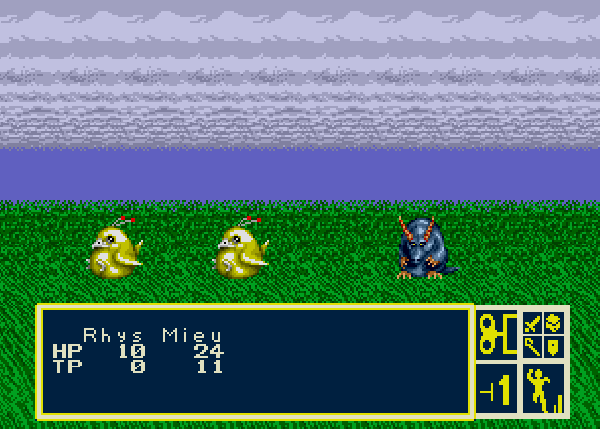
Phantasy Star III’s mechanics bear the same superficiality. Battles opt for a first-person viewpoint where the characters never show themselves; as with many a mundane RPG interface, enemies merely appear and vanish after a few heroic slashes, as though the game itself is bored with the routine. True, the original Phantasy Star had the same idea, but it offered 3-D dungeons and came along five years earlier. Phantasy Star III seems a waste of the game’s better-designed characters when we can’t see any of them in battle; not even Wren, who inspired a successor in Phantasy Star IV. At least the Japanese manual has lots of fun illustrations.
And then we come to the best idea in Phantasy Star III. The player goes through three different generations of characters, with each new protagonist determined by who the previous one married. It’s a concept well ahead of its time, and modern RPGs that let characters wed do it less to create narrative scope and more to sate fantasies of anime girlfriends. Yet Phantasy Star III can’t do it justice in a void of character development; at the end of each chapter, the player just abruptly picks a couple, with little to no melodrama. Should Rhys marry fellow party member Lena or wed Maia after all? It doesn’t matter in anything but the stats of his son.
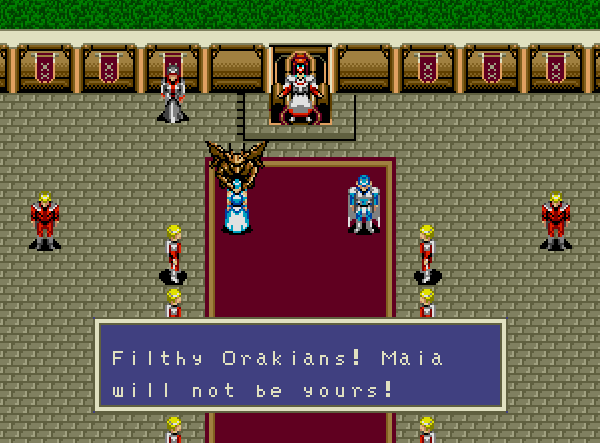
It’s enough to make one wish for more cliches. Why not have the hero choose between true love and a political marriage? And why not have that choice transform a spurned love interest and her entire clan into enemies for the next generation? That’d be sexist, but it would be something.
A few of Phantasy Star III‘s unfulfilled gasps come from troubled development and strange staffing choices; the team responsible for the other three games had very little to do with this one, and Sega rushed it all to market. Other drawbacks may be intentional. The better Phantasy Stars are superior in execution, but they’re also brief in storytelling; even Phantasy Star IV has relatively quick cutscenes. The same goes for their battles, which show traces of the arcade sensibility that Sega always had. Perhaps Phantasy Star III just didn’t want to take up that much of the player’s schedule.
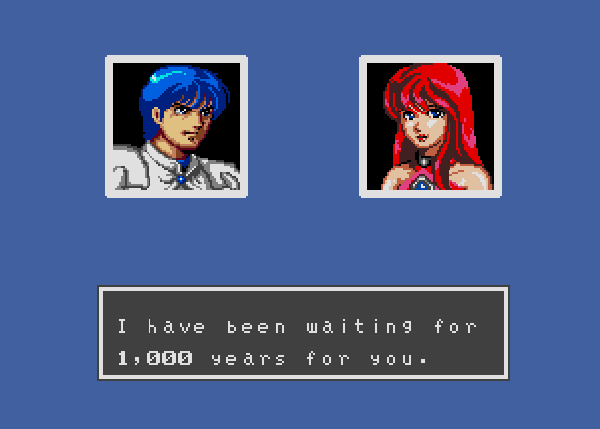
Sega revisited and reissued the early Phantasy Star games over the years. The first two saw PlayStation 2 remakes with broadened plots and more forgiving gameplay, while Phantasy Star IV remains an approachable, first-rate RPG that needs no great revisions. Phantasy Star III goes without a remake even though it’s the one most in need of a complete overhaul. Build up the characters. Flesh out the world. Bring the battles up to Phantasy Star IV standards. Add a fourth generation by letting us play Laya and Orakio’s tale. Give the player more choices in who to marry, even if they might wed one of the cyborgs and spawn some weird half-robot kids.
Phantasy Star III also emerges as the only piece of the original series that could stand a sequel. The first, second, and fourth games tell a nicely complete story that the series creators were wise enough never to touch again, but Phantasy Star III has only marginal connections, with several endings that invite a follow-up.

In fact, many fans of the series expected that for years. A game called Phantasy Earth lurked in Sega’s rumored release lists circa 1996, inviting all sorts of speculation. Nick “Rox” Des Barres of Gamefan even drove himself briefly mad pondering it in a feature about the editors’ most-wanted sequels. Phantasy Earth never appeared, though it may have been an early title for the unrelated RPG Terra Phantastica. Some of the later Phantasy Star games took up Phantasy Star III‘s idea of spacefaring colonies disguised as unsuspecting fantasy realms, but they’re not directly linked.
Phantasy Star III remains the weakest of its series, though it’s less a misstep and more a path poorly explored. Unloved in its own family, it doesn’t pull enough fans to justify its redemption in a full-blown remake. For that, it’ll also remain the most promising of the old Phantasy Star games, because that promise was never fulfilled.

The one thing about the Earth ending to PS III is that, um, Phantasy Star II happened. Who’s left? What’s left? Do they find out Earth’s dirty little secret on the way? I’m guessing that would be a WAY more interesting game than the one they had in mind. Or maybe they wanted to Planet of the Apes remake plot twist it and have them actually hit a time pocket that eventually causes their own planet’s destruction. I’ll stop before I go semi-mad myself….
ReplyDeleteExcellent piece! It’s a shame the English release of Phantasy Star III didn’t even include the Japanese version’s parallax effects, which would have at least made the battle scenes more interesting to look at.
ReplyDeleteThe original Phantasy Star was (and still is) my favorite game. Playing PSII shortly after I got my Genesis was also magical. So when I read about PSIII I had the same thoughts as you. I was so hyped for the game after the first two, and couldn’t believe how much more depth PSIII would bring!
ReplyDeleteTo say I was disappointed would be an understatement. In fact I was so let down by the game that I refused to buy PSIV (or even read about it). They took my most beloved franchise and made it into a joke. I wasn’t about to be conned by Sega again.
It wasn’t until about a decade later that I had finally read about how good PSIV was. Thankfully I was able to find a CIB version on ebay and find out for myself. But Sega missed out on a sale of PS IV in 1995 because of how bad PSIII was.
Joe:
ReplyDeleteYeah, I think they meant to wrap up the series with that ending, even though it wasn’t necessary. Still, it’s a decent twist for a game without much story.
Kishi:
I didn’t know the Japanese version had extra effects! I might pick it up someday just to have a good place for the Japanese PSIII manual I still own.
Vitaflo:
I envy anyone who got to play the first two Phantasy Stars when they were brand new. They’re still good fun, but they towered over every other RPG back around 1990.
I think Sega also missed out on a lot of PSIV sales by releasing the game for a hundred bucks (in 1995 money, no less). I know I didn’t nab it until it was seventy or so, and even then it took some hemming and hawing.